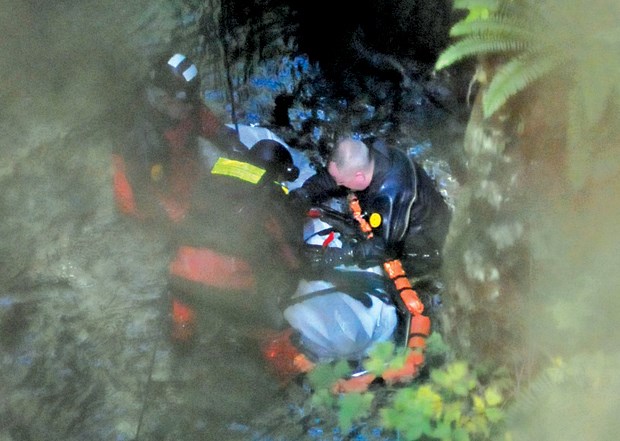The BC Coroners Service has identified the man who drowned in Lynn Canyon on Friday evening as Syed Wajahat Ali, 25, an international student from Pakistan who was living in Coquitlam.
Police received a report of a possible drowning just after 5 p.m. when Ali, who was with a group of other young men, jumped from the lower cliff into 90-Foot Pool that can be seen from the Lynn Canyon suspension bridge and got caught in an underwater eddy.
“His three other buddies, (and) a park ranger observed this. He went under the water and never resurfaced,” said Cpl. Richard De Jong, North Vancouver RCMP spokesman. “Our dive team attended and confirmed (Ali) was literally trapped under a rock in the water.”
District of North Vancouver Fire and Rescue Services raced to the scene with their swift water rescue team but there was little they could do, even for a recovery.
“Time was against us in a sense,” said deputy fire chief Wayne Kennedy. “When they located him, they found that he was too far submerged and with the current and conditions, it wouldn’t have been a safe effort on our part to try and retrieve him.”
As darkness fell in the canyon around 7 p.m., searchers pulled back for the night and RCMP set up a police perimeter. They recovered the body without incident on Saturday morning.
Even during the recovery attempt, more cliff jumpers were putting themselves in danger.
“They were literally taking the body out and there are guys that are going down to climb and jump,” De Jong said.
The summers of 2005, 2006, 2008 and 2013 all saw drowning deaths in Lynn Canyon but the number of fatalities has fallen of sharply since the District of North Vancouver started its park ranger program in 1993.
“In 1993, before we had the ranger program, we had 17 people perish in the canyon over a 12-year-period,” said Gavin Joyce, the district’s manager of engineering, parks and facilities. “They have my full support and confidence. They do a wonderful job out there as evidenced by what’s happened over the last three or four years.”
The rangers try to make contact with as many people as possible entering the canyon to warn them about the very real dangers of cliff jumping. The district has in the past avoided enforcement as a method of keeping canyon visitors safe.
“At this point we don’t have bylaws or fines in place. It’s the practicality of it — issuing tickets, chasing people down in a park — we believe the best approach at this point is with the ranger program, education and discouraging people from cliff jumping,” Joyce said.
Firefighters have been called to Lynn Canyon for rescues 12 times so far in 2015, with five or six of those happening in a single hot weekend, according to Kennedy.
The hot dry summer sent people flocking for the relief of the cool water but more and more folks are showing up in the canyon thanks to videos on social media going viral “glamourizing cliff jumping into Lynn Canyon,” Kennedy said.
“We tried our best to get our message out there. It’s great that people want to come into our parks and enjoy them but there’s an inherent danger that goes along with that and they need to be aware of that,” he said.
Kennedy also warned the water’s level of danger changes with the weather — something repeat visitors might forget.
“We had these record low water conditions all summer and some of these pools might have been quite accessible and fun to be in but after that last bout of rain, the discharge now coming down the rivers is quite significant. That changes everything in terms of dynamics of the river,” he said.



